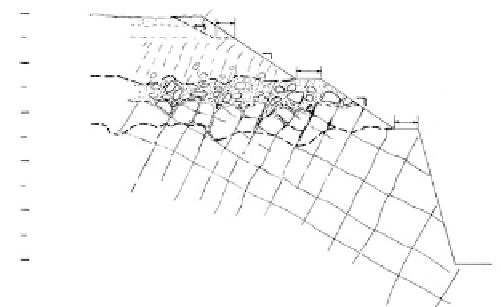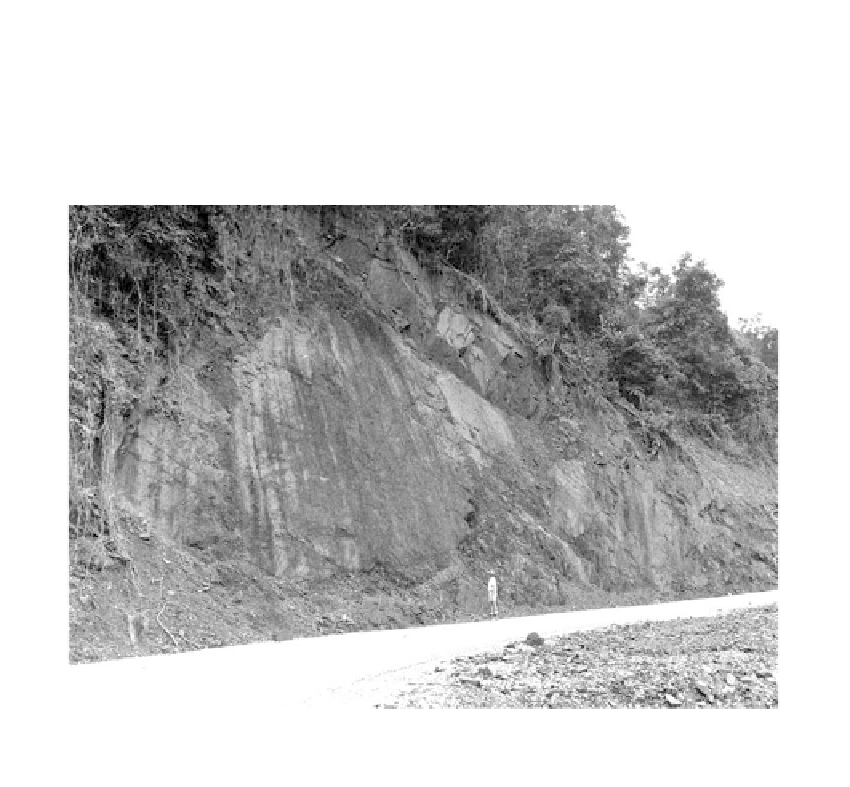Environmental Engineering Reference
In-Depth Information
blocks. Line drilling and presplitting during blasting operations minimize disturbance of
the rock face.
Typical Cut Inclinations
Hard masses of igneous or metamorphic rocks, widely jointed, are commonly cut to 1H:4V
(76°) as shown in Figure 9.100. Hard rock masses with joints, shears, or bedding repre-
senting major discontinuities and dipping downslope are excavated along the dip of the
discontinuity as shown in
Figure 9.101
,
although all material should be removed until the
original slope is intercepted. If the dip is too shallow for economical excavation, slabs can
be retained with rock bolts (see
Section 9.4.6)
.
Hard sedimentary rocks with bedding dipping vertically and perpendicularly to the
face as in
Figure 9.102
or dipping into the face; or horizontally interbedded hard sandstone
2:1
4m
0
I
IA
1. saprolite bench (optional)
I Residual soil
1½
IC
1
10m
5m
2. Weathered rock bench
IIA
1
1
II Weathered rock
20m
IIB
5m
3.Rock bench
30m
FIGURE 9.100
Typical cut slope angles for various
rock and soil conditions. (From Deere,
D.U. and Patton, F.D.,
Proceedings of
ASCE, 4th Pan American Conference
on Soil Mechanics and Foundation
Engineering,
San Juan, P.R., 1971,
pp. 87-170. With permission.)
¼
1
III Unweathered rock
40m
Typical seismic velocities
IA, IB
IC
IIA
IIB
III
1000 . 1200+ fps
1500 .3500 fps
3500 .6500
6500 .10,000
10,000 . 18,000+
(305 . 365+ m/s)
(455 . 1060 m/s)
(1060 . 1985 m/s)
(1985 . 3050 m/s)
(3050 . 500 m/s)
50m
Note: Water = 1500 m/s
FIGURE 9.101
The face of the major joint surface in siltstone is stable but the overhanging blocks will fail along the same
surface unless removed or retained (Sidikalang, Sumatra).



